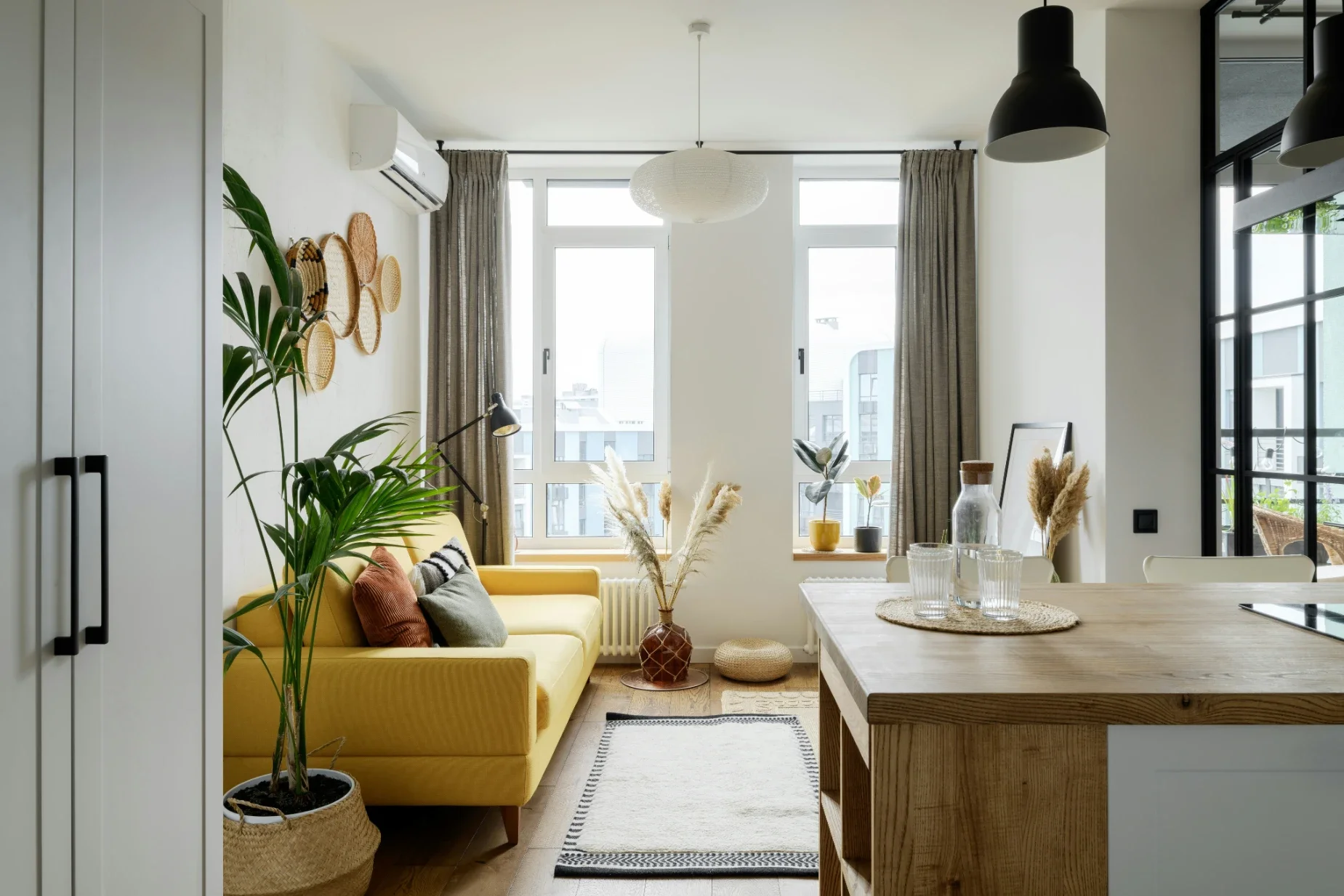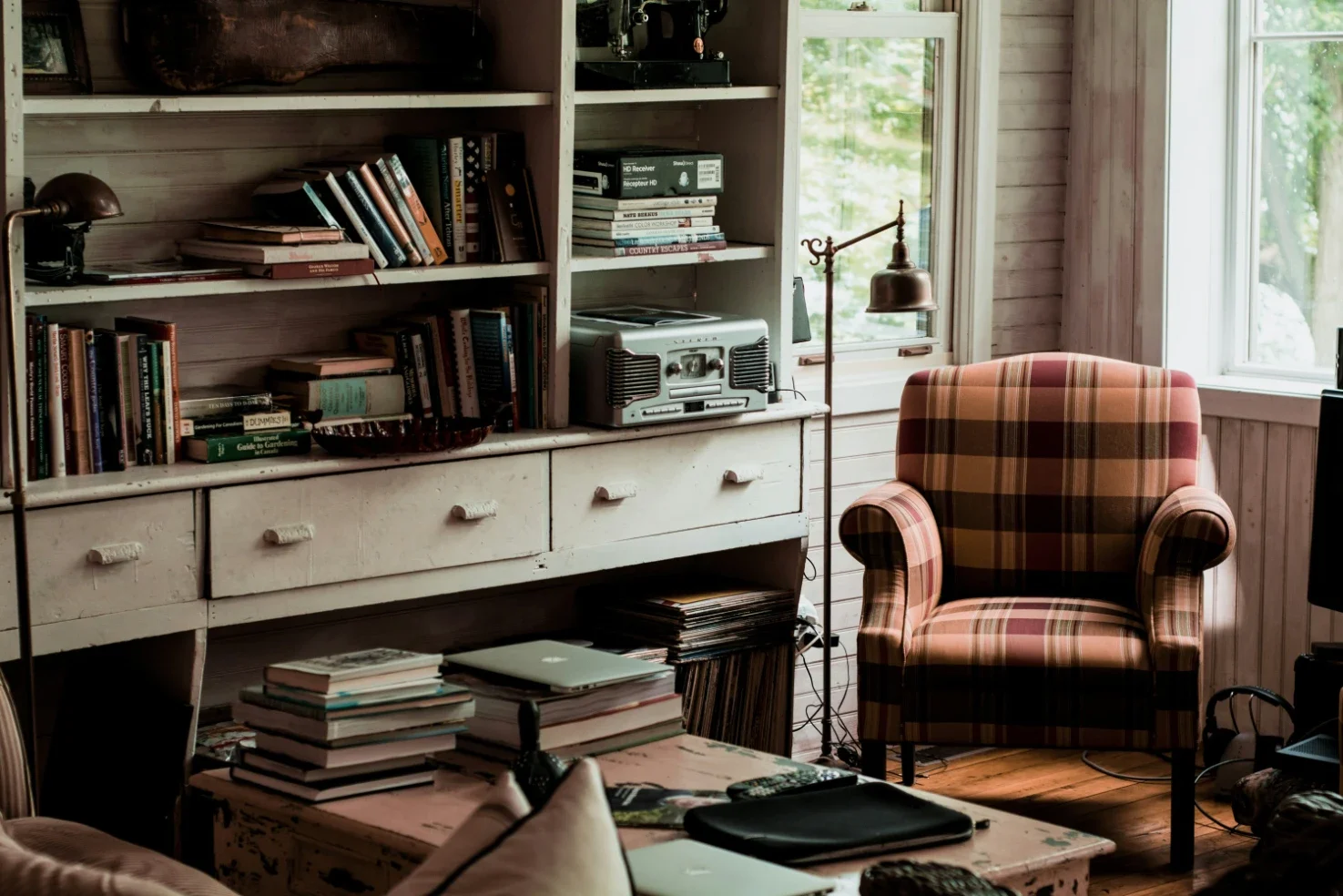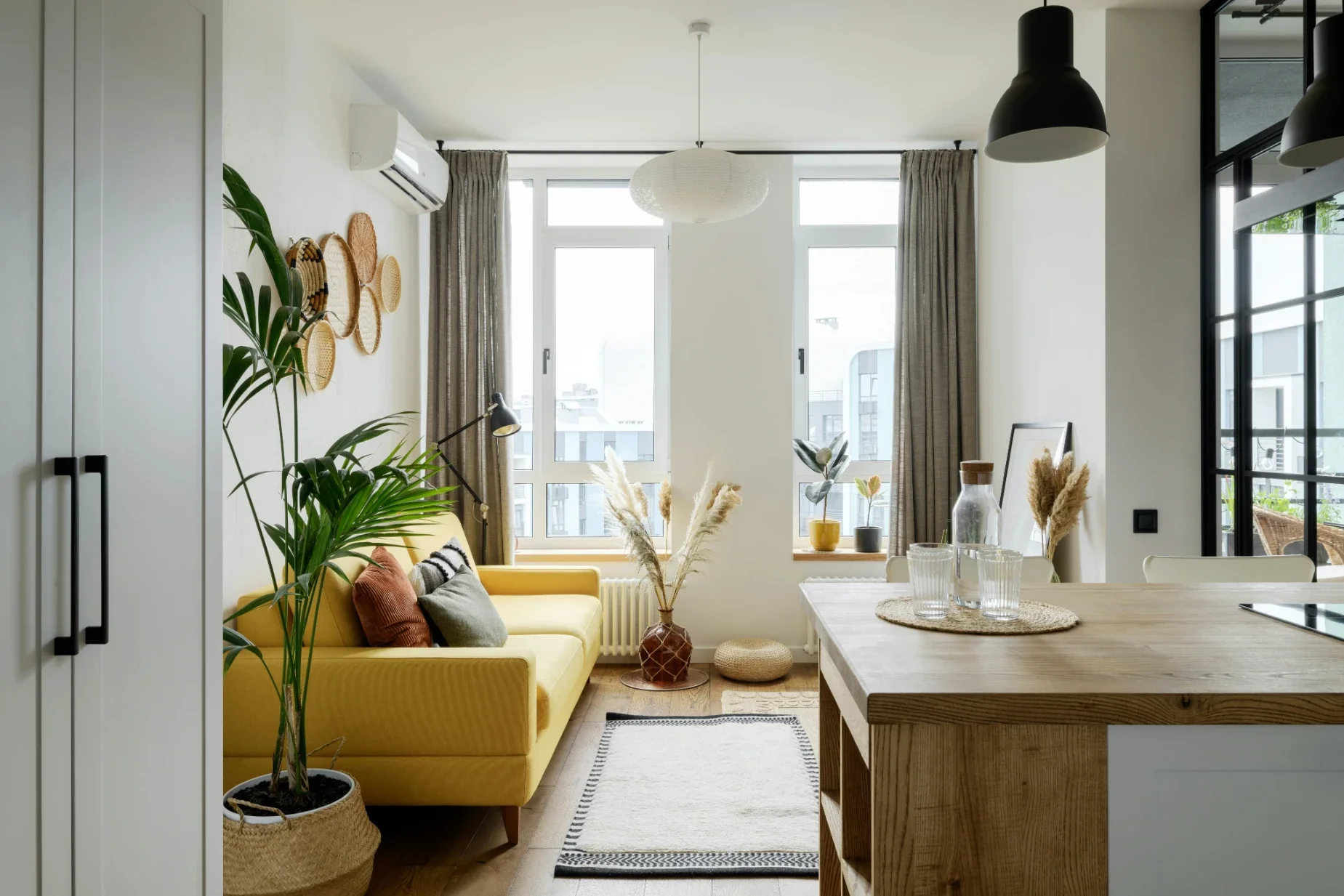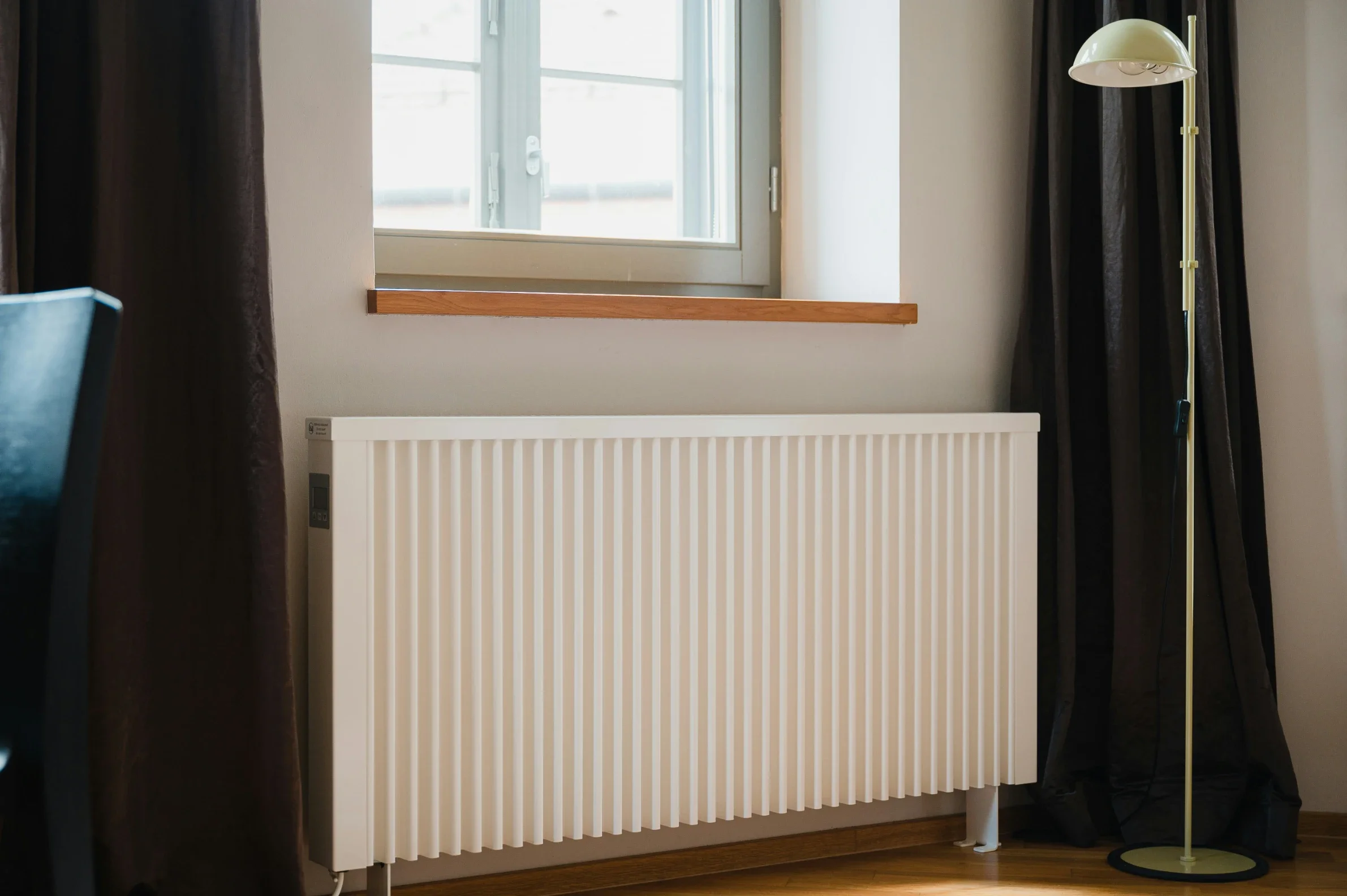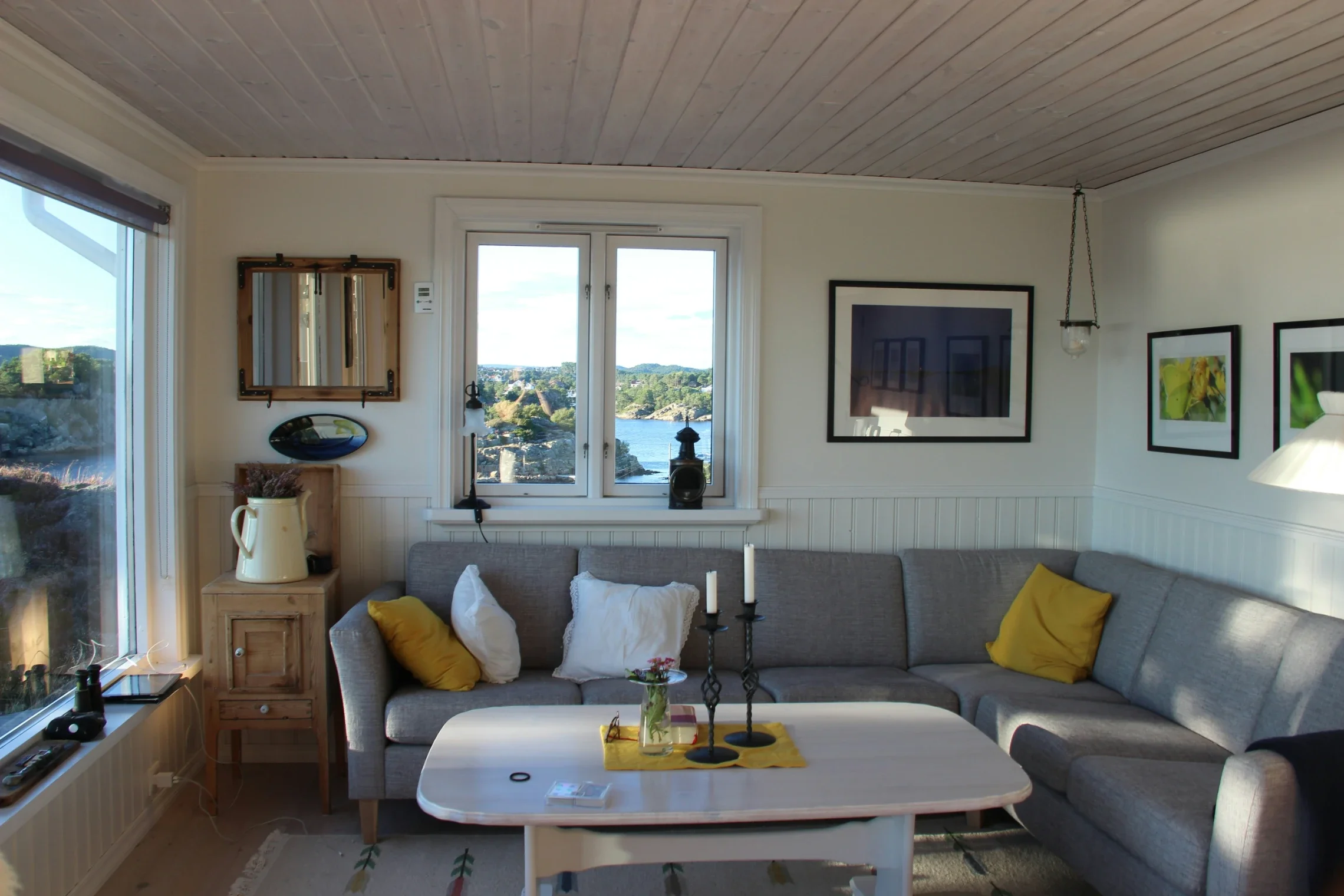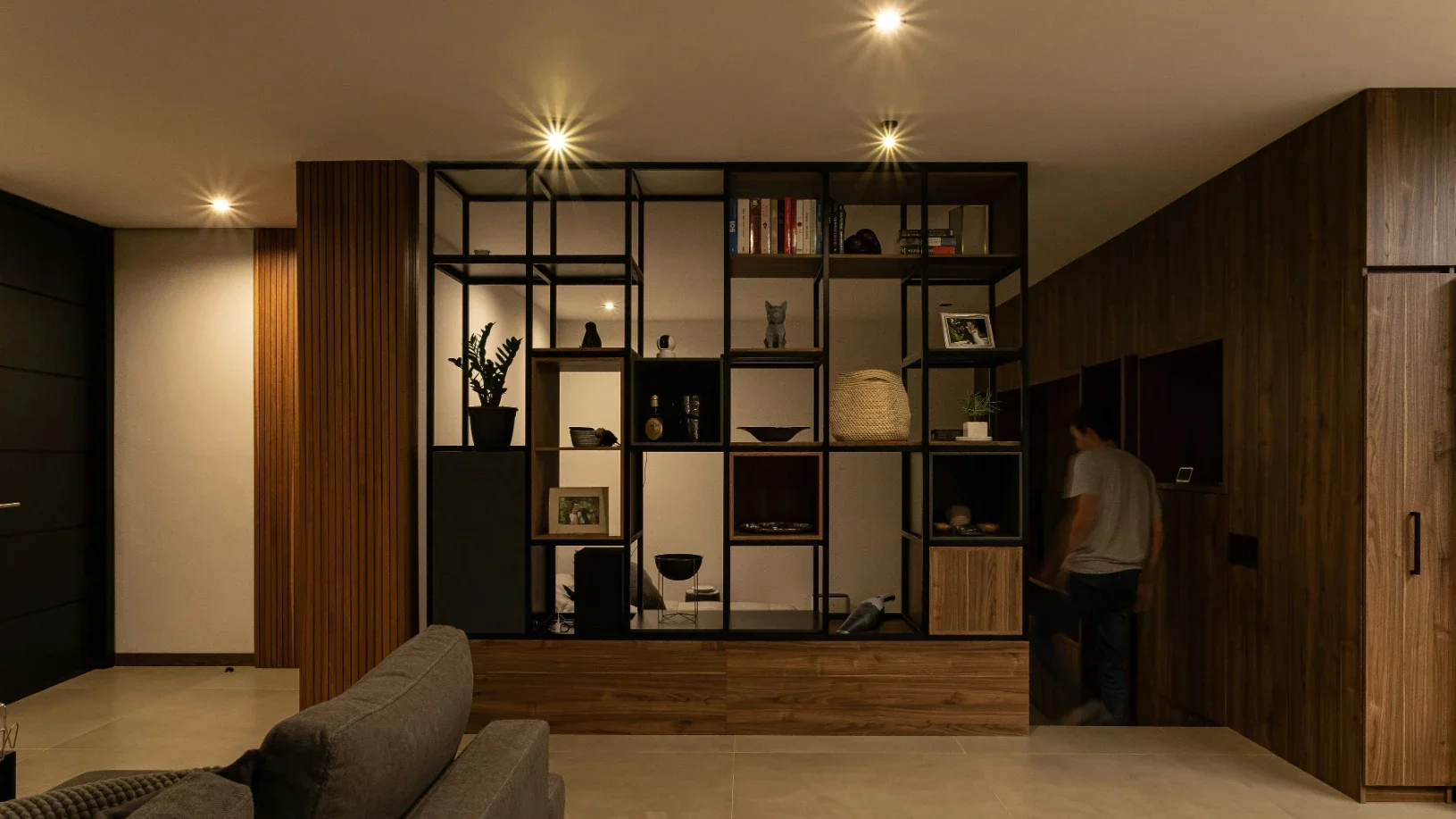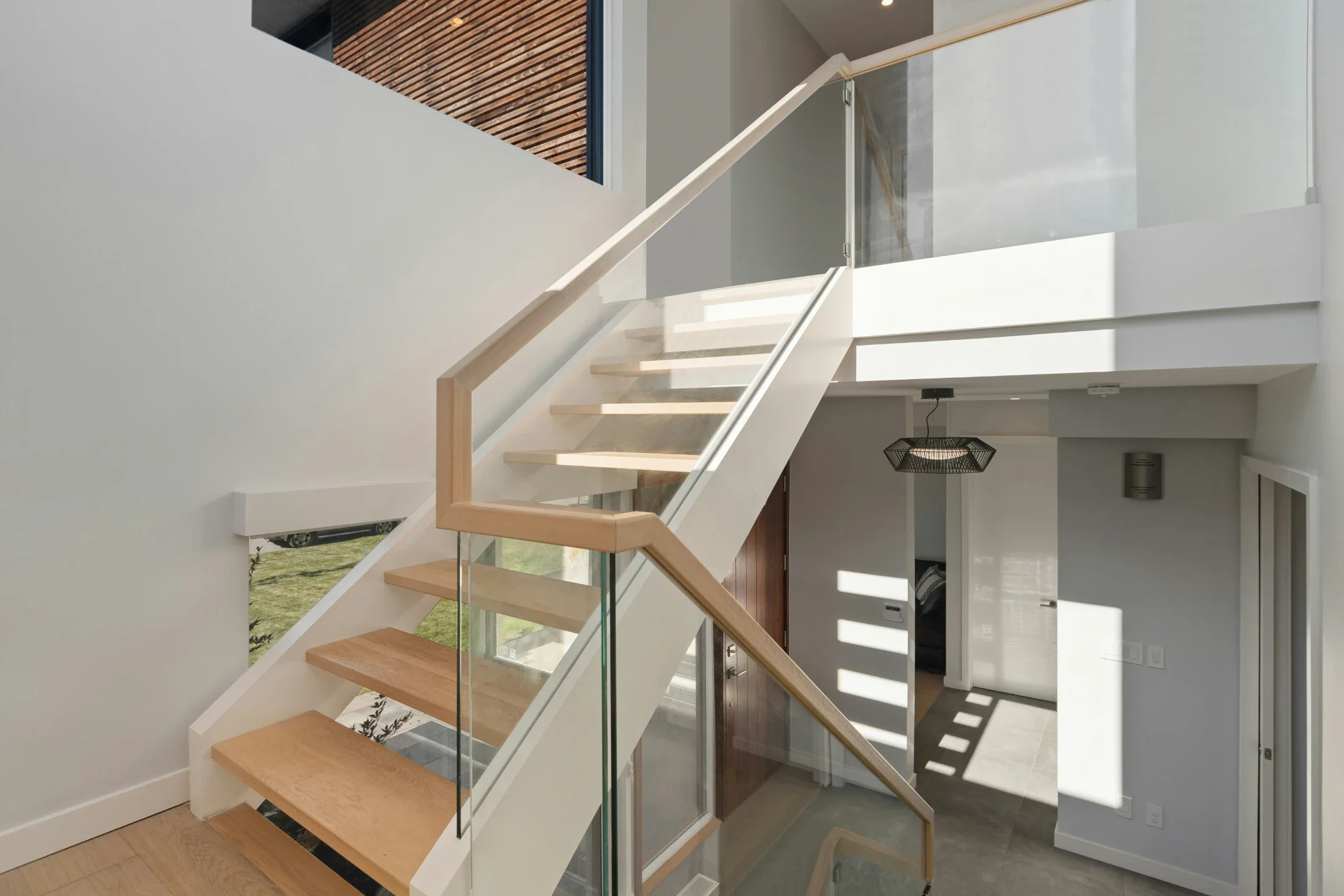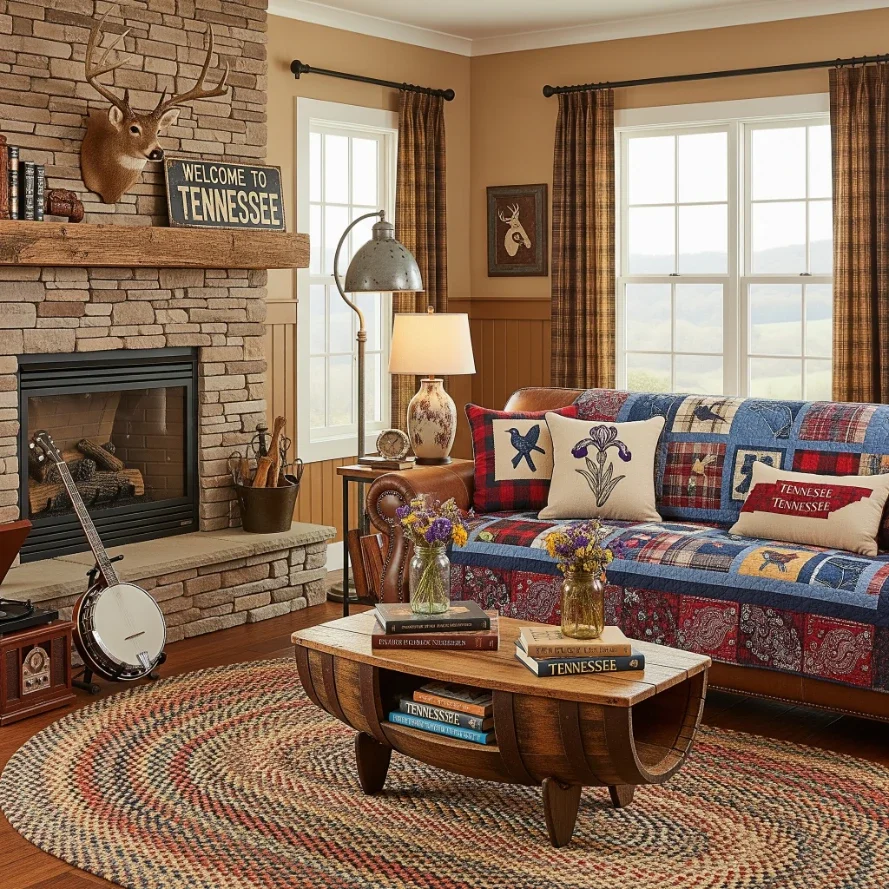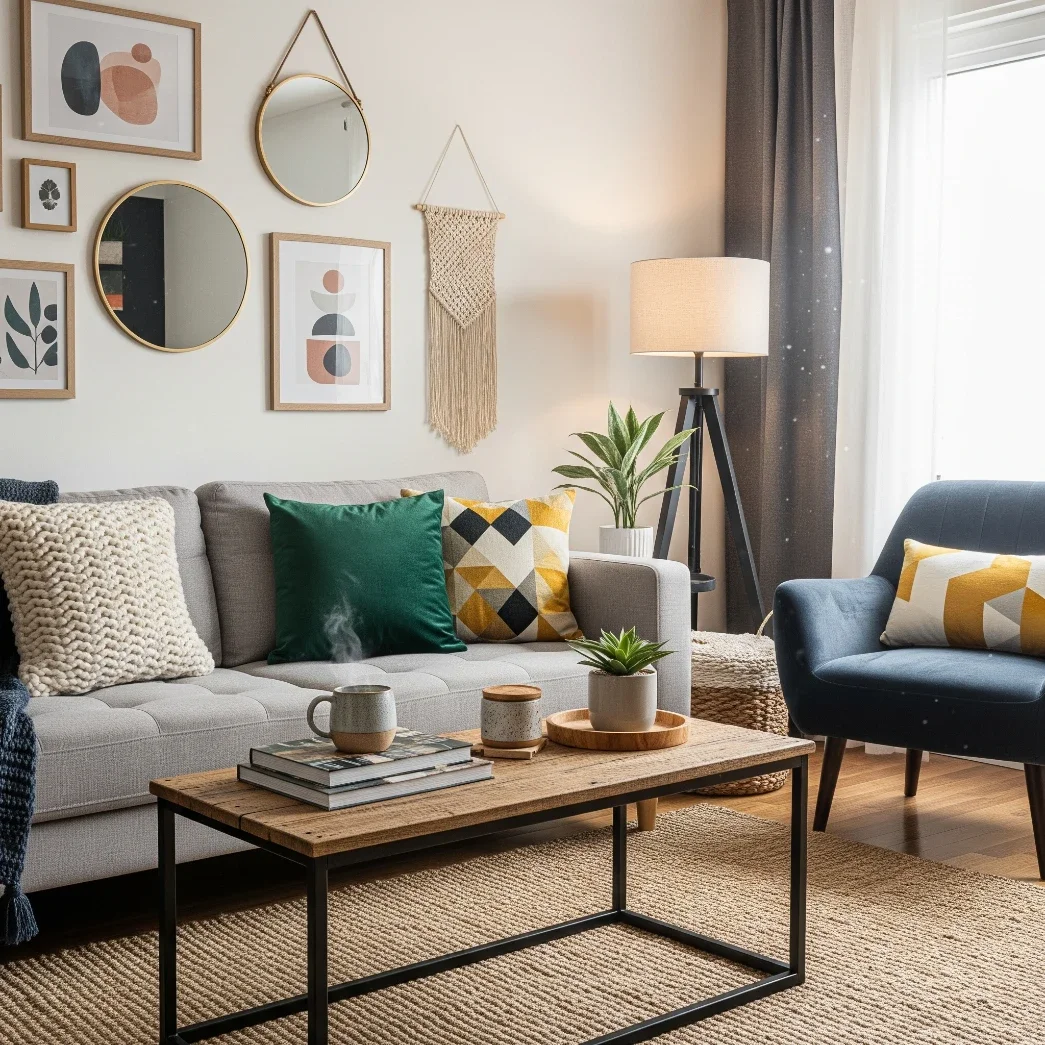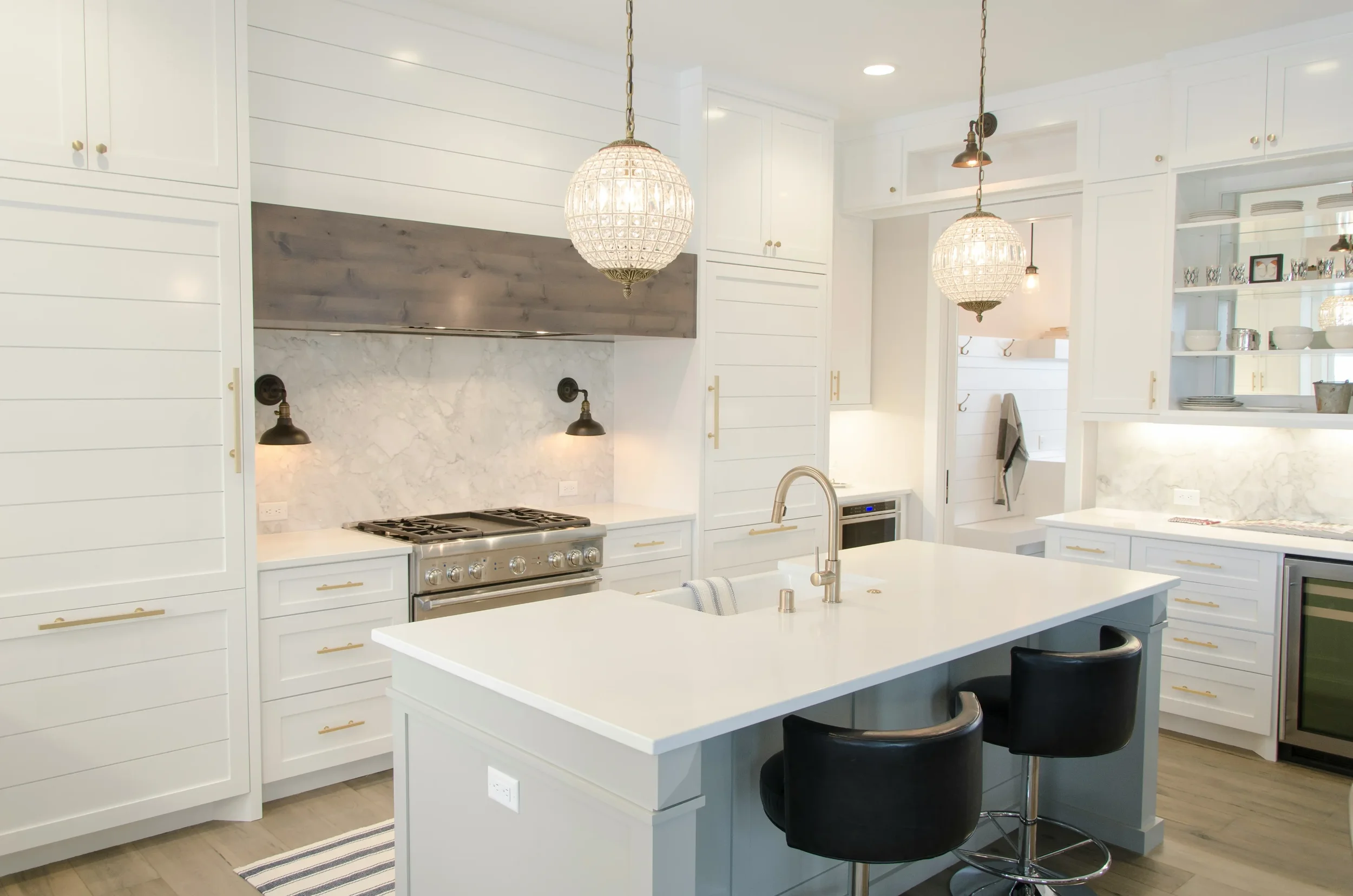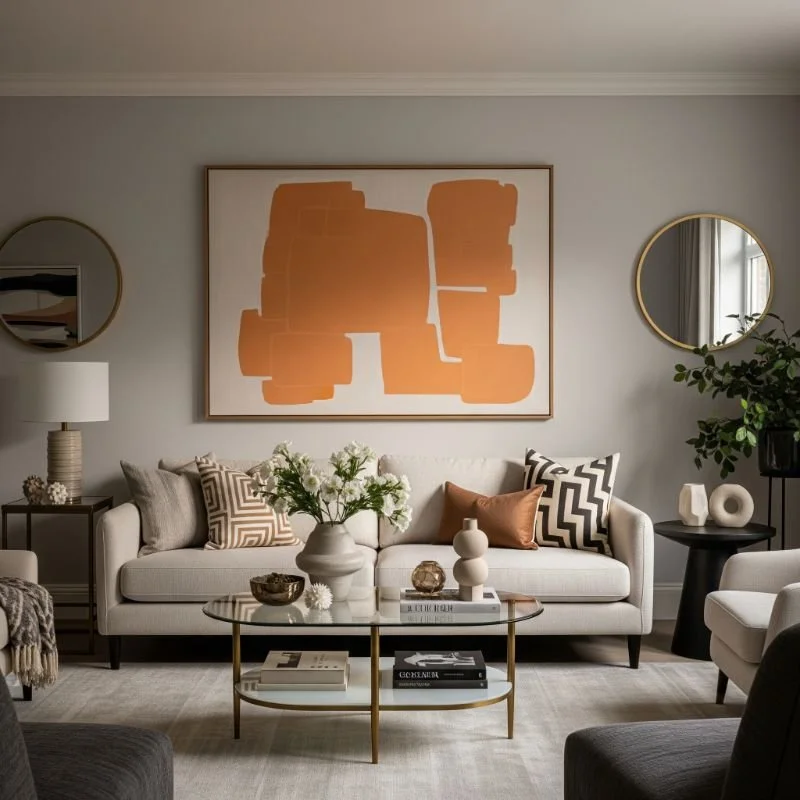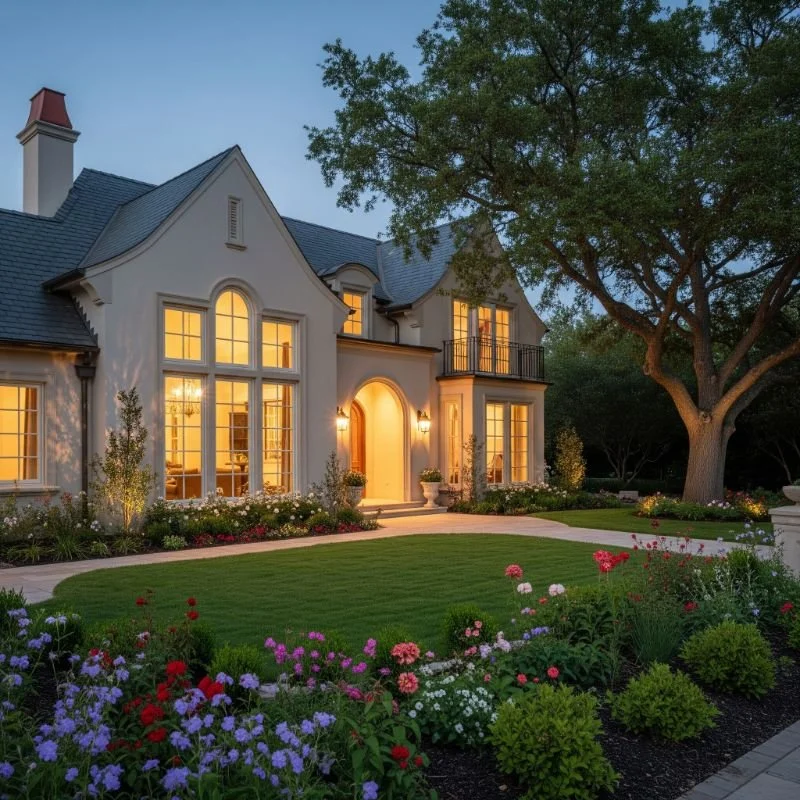How to Create a Modern Home from Second-Hand Treasures
Discover how to turn second-hand finds into a stylish modern home. Blend sustainability with creativity for a fresh, personalized interior design.
A new apartment invites a kind of optimism that’s hard to fake. You turn the key, the echo of empty rooms follows you down the hallway, and every corner feels like a decision waiting to happen. The temptation is to buy your way into that feeling: a full cart, a fast delivery, a single afternoon where the place goes from bare to styled. It’s quick, yes, but it can be hollow—and expensive. There’s another path that asks for a different pace: designing with second-hand furniture and accessories.
Second-hand design meets two modern realities. First, money matters. Rent deposits, utilities, and the hidden costs of moving add up fast. Saving on furniture isn’t stingy; it’s strategic. Second, there’s a cultural shift toward objects with history. The market flooded with identical pieces created a countercurrent: people want homes with character. A hand-rubbed oak dresser from the 1970s carries the soft sheen of years. A ceramic lamp with a slightly irregular glaze tells you a real person made it, not a line of machines. The value lies not only in what you get but also in what you avoid—waste, debt, and that faint sense that your living room looks like a showroom anyone could copy.
There’s a practical advantage too. When you build a home second-hand, you learn your own taste by doing. You don’t have to decide everything at once. You can live with a room for a week, notice where your keys end up, find the spot where the light falls just right at 4 p.m., and choose pieces accordingly. Your home grows with you. That growth carries a quiet psychological payoff: you don’t feel like a guest in a staged set; you feel like the author of a lived-in story.
Beyond money and mood, second-hand design is a gentle protest against throwaway habits. You keep something out of a landfill and extend its life. You send a small signal to the market about what you value: durability, repair, and patience. These are not dramatic gestures, but they add up, room by room. And there’s nothing quite like the private glow that comes from rescuing a scuffed table, restoring it, and then eating breakfast there every morning. You built that meaning with your own hands.
The Hunt: Finding Pieces with Potential
Finding second-hand treasures isn’t hard; doing it well is a skill. Think about the hunt as a blend of strategy, habit, and luck. Strategy steers you to the right sources. Habit—checking regularly, learning seller patterns—keeps you ready. Luck favors the person who knows what they’re looking at when the right piece appears.
Start nearby. Thrift stores and charity shops turn over inventory more than you think. Go on weekdays if you can; weekends tend to get picked clean. Estate sales often list photos in advance; look for solid wood case goods, mid-century silhouettes, and notable makers. Flea markets are hit-or-miss, but vendors will often tell you when better stock arrives. Online platforms—local marketplace apps, community classifieds, even neighborhood groups—can be goldmines. Save searches with alerts for keywords like “solid wood,” “walnut,” “oak,” “teak,” “vintage,” “campaign chest,” “burl,” or known brands. If you find a promising seller, save their profile; good sources often repeat.
The second skill is reading quality beyond the surface. Materials come first. Solid wood beats veneer for refinishing potential, while quality veneer over stable plywood can be worth grabbing if the design sings. Check joinery: dovetails at drawers, mortise-and-tenon at chair rails, corner blocks under tables. Shallow drawers and stapled corners point to lightweight construction. Weight matters; pick the piece up if possible. Heft often signals density and durability. Run your hand along edges and undersides; sharp raw edges suggest cheap production. Look at the back panels—thin fiberboard with rough staples is a warning sign, while finished or neatly screwed panels are promising.
Learn to spot hidden value. Maker’s marks, burned stamps, brass tags, and branded drawer bottoms are a start. The methodical feel of old hardware—solid pulls, smooth threads—often signals care in the original build. Even unmarked pieces can be strong candidates if the lines are clean and the proportions are timeless. A sideboard with simple legs and a well-balanced face can take almost any finish and slip easily into different styles.
Condition is not the same as potential. Scratches and water rings are superficial; sun-bleached patches and loose joints can be fixed; missing knobs are an excuse to upgrade. Structural damage, rot, active woodworm, cracked marble, or sagging frames should make you pause unless you’re ready to invest in professional help. Upholstered items require a stricter eye. Strip the seat if possible and check the webbing or springs. Smell matters—odors from smoke or heavy mildew are hard to expel without a full rebuild.
Patience unlocks the best outcomes. Great second-hand interiors rarely happen in a weekend. You’re curating. That means passing on almost-right items and leaving room in your budget and your floor plan for the piece you truly want. Keep a running list of dimensions for crucial spots—sofa length, dining table footprint, maximum dresser height under a window. Carry a tape measure, painter’s tape for quick outlines on the floor, and felt pads for negotiating with a seller who fears scratches during pickup. The more prepared you are, the more confidently you can act when the right object shows up.
The Art of Blending Old and New
A home built from second-hand finds becomes cohesive when you blend eras with intent. Think like a conductor, not a collector. Your job is to orchestrate harmony from varied voices.
Start with contrast. Smooth next to textured, matte next to gloss, industrial next to organic. A sleek induction cooktop can live happily beside a butcher-block island with knife marks from decades of dinners. A minimalist linen sofa gains depth from a 1960s walnut side table. In small rooms, one dramatic piece—say a sculptural floor lamp or a reclaimed dining table—anchors the space and lets supporting items recede. Contrast helps each object state its case without shouting.
Proportion keeps the room calm. Pair substantial case goods with lighter chairs. If your coffee table is heavy and low, balance it with an airy floor lamp or a glass-fronted cabinet. Maintain breathing room around statement pieces; allow sightlines across the room. If a vintage wardrobe crowds a corner, swap it with a lower dresser to give the window’s daylight room to spread.
Colour acts as your common language. Pick a base palette that fits your light: warm whites and sandy neutrals for north-facing rooms, cooler greys or pale blues for intense southern light. Use one or two accent colours to link disparate items—cobalt in a vase, a printed cushion, and a small artwork can tie zones together. Wood tones benefit from moderation; too many species can look chaotic. Choose two main tones—a deeper walnut/bog oak and a lighter ash/beech, for instance—and let outliers appear only once. Metal finishes should repeat sparingly; if you have polished brass pulls in the kitchen, echo brass in one lamp and one frame rather than scattering it everywhere.
Textiles soften the conversation between old forms and new functions. Hand-loomed rugs, washed-linen curtains, and wool throws introduce a lived-in comfort that modern pieces alone can miss. A room with hard materials—wood, glass, stone—needs fiber to keep sound gentle and touch inviting. This is also where you can place a single note that blends character and story: a pair of vintage restaurant chairs tucked under a small writing desk, cleaned and rewaxed, works because the patina carries warmth while the silhouette remains simple.
Lighting finishes the blend. Use layers: ceiling for ambient, table for intimacy, floor lamps for reach. Vintage lamps gain new life with safe rewiring and fresh shades. In the kitchen, a contemporary track light can partner with a 1950s enamel pendant over the dining table. In the bedroom, a slim modern sconce frees space for a sturdy vintage nightstand. The conversation between eras reads as intentional rather than accidental when light reveals the materials honestly.
Restoration and Reinvention
Nothing deepens your connection to a second-hand home like restoration. The first rule is simple: start with reversible steps. The second is equally simple: protect your health while you work.
For wood, cleaning comes first. A mild soap and warm water remove grime; dry thoroughly. Follow with mineral spirits to lift wax build-up and reveal the true state of the finish. If the piece looks good after cleaning, consider a coat of paste wax or a wipe-on oil/varnish blend to renew the sheen. When refinishing is necessary, sand lightly with the grain, stepping through grits patiently. Stains penetrate unevenly on old wood; test in an inconspicuous area. Water-based topcoats dry fast and keep colour light; oil-based options deepen tone and highlight grain. Replace missing or weak hardware with solid metal, not hollow cast pieces; the tactile feel matters every time you open a drawer.
Paint transforms more than it hides. A tired bookcase gains new purpose in a saturated green; a mismatched chair set becomes a family with a single tone. Use shellac-based primer over glossy surfaces to avoid peeling. For a smoother finish, roll quickly and tip off with a quality brush. If you’re painting doors or drawer fronts, label everything before removing it and drill pilot holes for new handles to avoid splintering.
Upholstery calls for triage. If the frame is sturdy, webbing intact, and foam decent, a new fabric can take a piece from forgettable to beloved. Start with drop-in seats; they teach you the rhythm of stapling, folding corners, and finishing trim. For sofas and sprung chairs, decide whether the fabric will outlast your patience. Hiring a professional for complex shapes or historically significant pieces pays off; you preserve value and avoid frustration. Always inspect upholstery for pests before bringing it home; a hot day with plastic wrapping in the sun can help, but a cautious quarantine in a garage or spare room is wiser.
Electrical items need respect. Old lamps are often safe after a basic rewire—new cord, new socket, secure connections—but if you’re unsure, find a lamp repair shop. The cost is usually modest compared to the peace of mind. For pieces with drawers or doors that stick, wax the runners, adjust hinges, and tighten screws. Tiny things—felt pads under feet, a drop of wood glue in a loose dowel—keep wear down and make everyday use smoother.
Safety is part of the craft. Test paint from pre-1978 items for lead before sanding. Wear a mask when stripping finishes or cutting foam. Ventilate your workspace. Keep solvents sealed and rags laid out to dry flat to prevent combustion. None of this is glamorous, but these habits let you work for hours without paying for it later.
Restoration isn’t only repair; it’s reinvention. A solid dresser with a damaged top becomes a bathroom vanity with the addition of a stone slab and plumbing cut-outs. A tall hutch loses its upper cabinet to become a long media console. A single door from a broken armoire becomes a dramatic wall mirror with added glass. Creativity grows when you treat furniture as raw material rather than a fixed idea from a catalog. You learn to see function where others see flaws.
Building Character Through Composition
Once you’ve gathered and restored your pieces, composition turns a set of good items into a good room. Composition starts with flow. Walk the paths you take each day—from door to sofa, from bed to bathroom, from kitchen sink to table. Keep those routes open. Let large furniture create gentle boundaries rather than barricades. In small apartments, zone with rugs instead of walls; a deep wool runner defines a hallway that doesn’t exist on the floor plan.
Scale and negative space shape comfort. Give your tallest piece a wall that can absorb its height. Keep the top third of your room light—sheer curtains, open shelves, slim lamps—so the ceiling feels higher. Low furniture makes small rooms feel broader; if your sofa sits high, offset it with a low, long coffee table. Leave at least a hand’s width between a sofa and the wall; that tiny shadow line keeps the room from feeling crammed. Corners like company—nest a plant with a floor lamp to create a glow that welcomes the eye.
Layering ties decades together. Start with a foundation rug large enough that front legs of major seating land on it. Add a throw with a looser weave than the rug to vary texture. Stack books horizontally on a shelf to break the vertical rhythm. Hang artwork at a consistent center height—roughly eye level—so a gallery wall of different frames still reads as one gesture. Mirrors belong across from light sources rather than directly behind them, catching glow without glare.
Repetition is your secret continuity. Repeat one material—brass, rattan, linen—at least three times in a room: a lamp, a tray, and a frame; or a chair seat, a pendant shade, and a basket. Repeat one shape—arches, circles, or squares—in small doses to calm a varied mix. Even colour repetition can be quiet: the rust in an old kilim echoed by clay pots on a sill, the soft black of window frames echoed in a painted picture rail.
Display with restraint. Not every object needs a pedestal. Rotate your favorite small things each season rather than cluttering every surface. A single, well-placed bowl on a console feels intentional; a dozen trinkets fight for attention. Give sentimental items the dignity they deserve. A slightly cracked teacup from a grandparent can sit on a stack of cookbooks near the kitchen window and still look at home. Let the room leave space for new stories; if every surface is full, nothing new can arrive without chaos.
Finally, trust the rhythm of daily life to tell you what’s working. If shoes pile near the door, add a low bench and a tray for keys. If mail drifts across the table, clear a 30-centimeter strip near the entry for a wall pocket. If the living room feels busy, remove one piece rather than adding a calmer one. Edits are as powerful as purchases; subtraction is its own kind of design.
Living with Meaning, Not Just Style
A home built from second-hand finds asks you to participate. You become the curator, the caretaker, and sometimes the restorer. That participation ties you to your rooms in a way a one-click order can’t touch. You remember where a table came from, who helped carry it up the stairs, and how the grain emerged after the second coat of oil. These memories settle into everyday routines—the mug that fits your hand, the lamp you switch on before dawn, the cupboard that closes with a satisfying thud. Style matters, but meaning lasts longer.
There’s a social layer too. Buying second-hand moves money through your community. You pay a neighbor for a bookshelf they no longer need. You chat with the person at the charity shop who tells you when donations come in. You meet a craftsperson who rewebs chairs the old way and learn why that matters. Local circles tighten. Your home becomes a tiny map of those relationships.
Sustainability is not an abstract banner in this context; it’s the day you skip a flat-pack order because a well-made table waits two blocks away, or the afternoon you choose to rewire a lamp rather than toss it. These acts don’t claim perfection. They argue quietly for longevity, repairability, and respect for materials. Over time, that mindset spreads from furniture to other choices: you patch a jacket, sharpen a knife, oil a cutting board, keep a small box of hardware rather than driving across town for a single screw.
There’s also the slow confidence that comes from solving real problems with your hands. You learn to judge scale without a measuring tape because you’ve measured so many times. You understand natural light in your apartment across seasons because you paid attention before hanging the curtains. You pick fabrics that can handle your life—kids, pets, red wine—because you’ve lived with fabrics that couldn’t. The home keeps teaching you, and you keep responding.
Most of all, second-hand design makes room for your story. New doesn’t always mean better. Better often means chosen, cared for, adapted, and used. It means you don’t rush your way to a finished photo. You pause, listen, and place. You leave a little space in the corner for a chair you haven’t found yet. You give the future a place to land.
When someone walks into such a home, they sense coherence that doesn’t come from a single brand or a single weekend of shopping. It comes from the layered marks of choices made with attention. It’s the quiet satisfaction of eating at a table you rescued, reading under a lamp you rewired, and leaning back on a sofa softened by dozens of Sunday afternoons. A home like that doesn’t just hold your things; it holds your time, your care, and your growing skill.
Designing your new apartment with second-hand furniture and accessories isn’t a workaround or a compromise. It’s a method for building a life at human speed. You spend less, waste less, and learn more. You invite durability and story into rooms that might otherwise blur into a season’s trend. And one day, when the light lands across the grain of a table you saved, you’ll feel a small, clear thought: this is mine, not because I bought it, but because I made it part of my daily rhythm. That’s the real luxury—a home that carries your fingerprint in every room.
